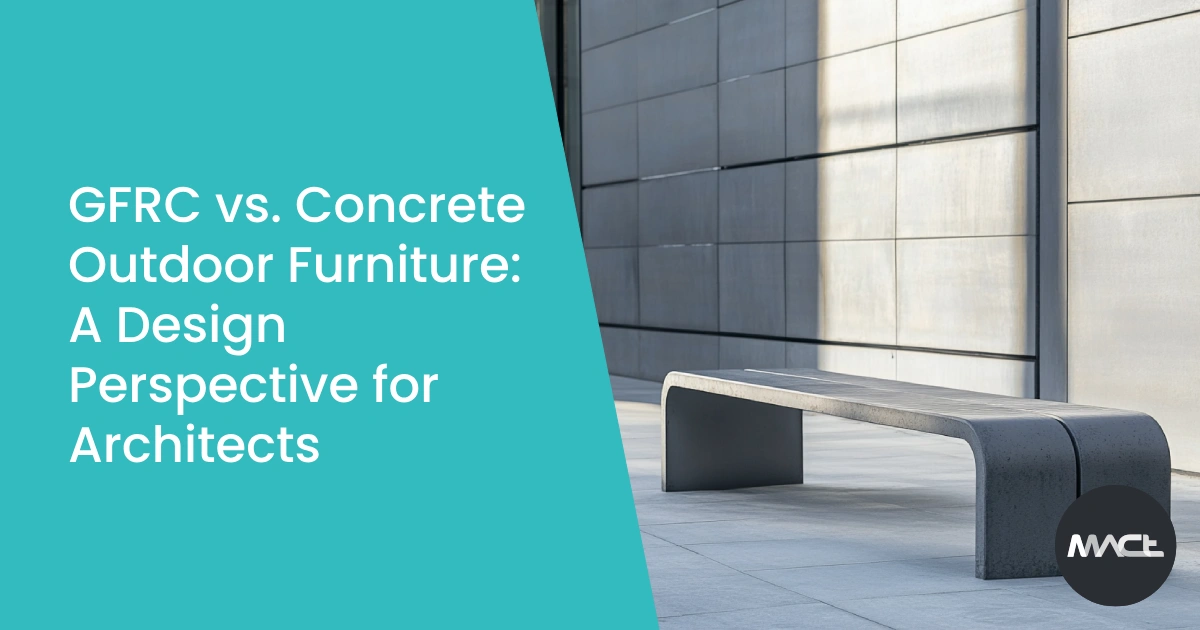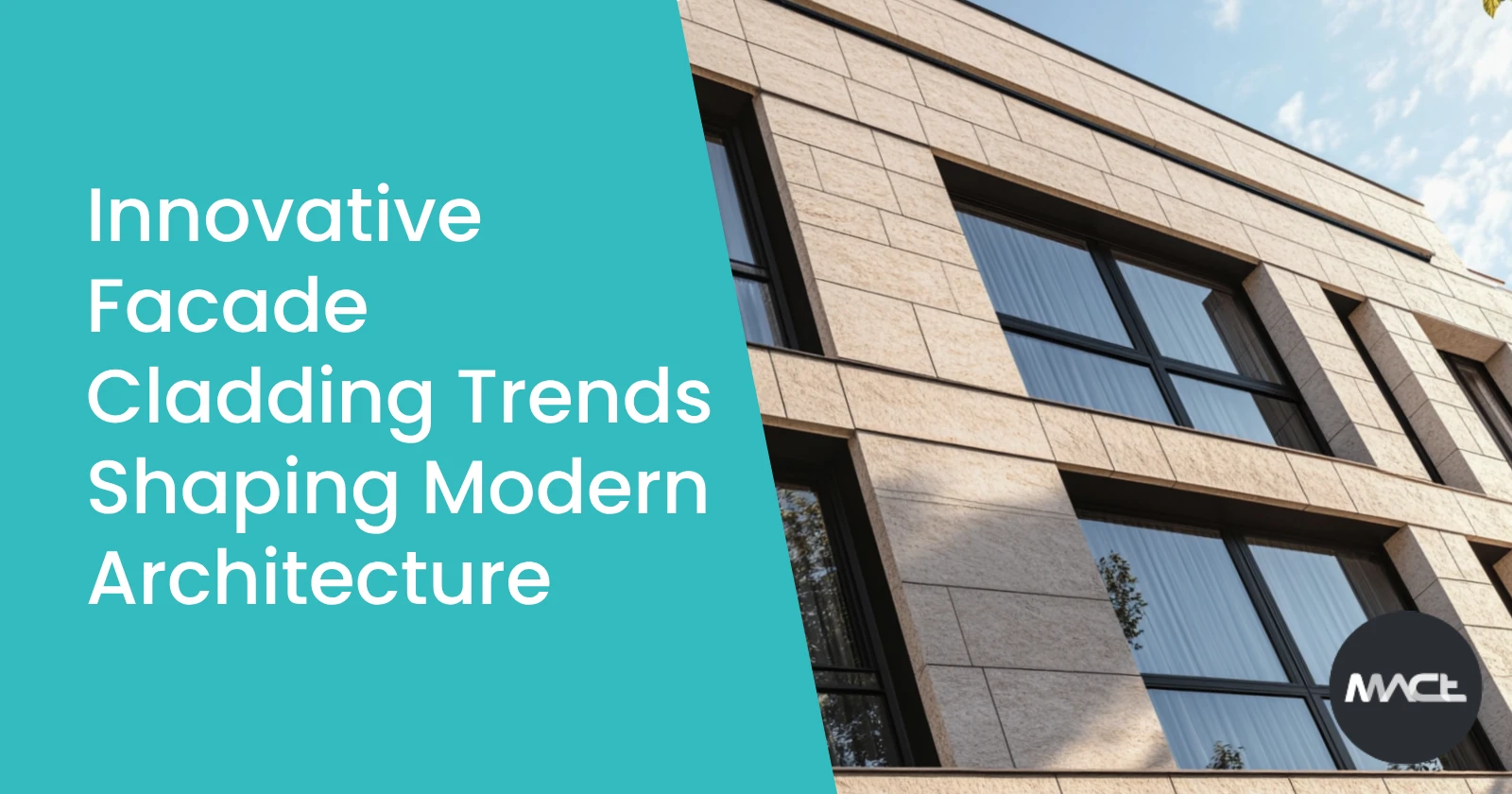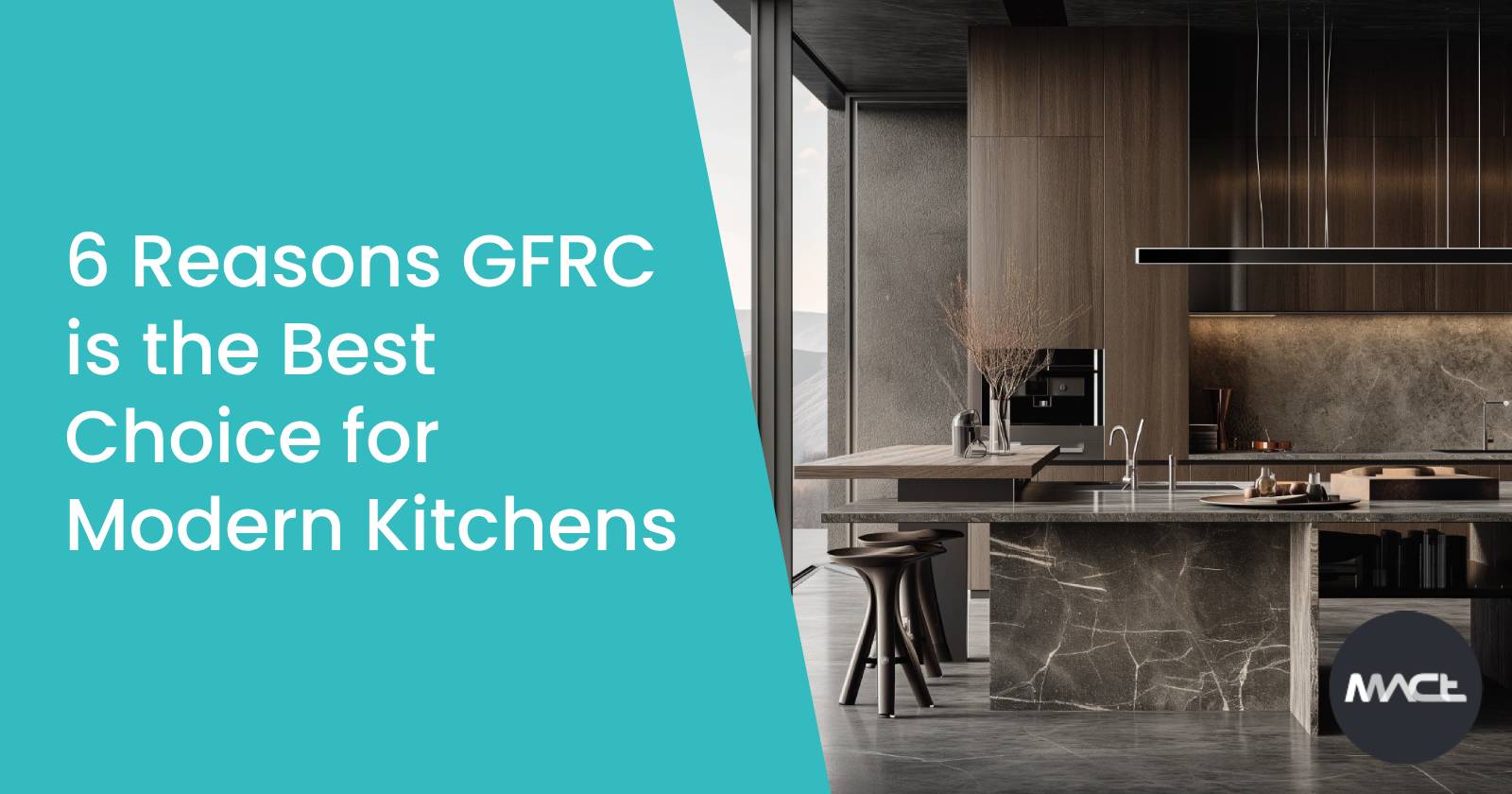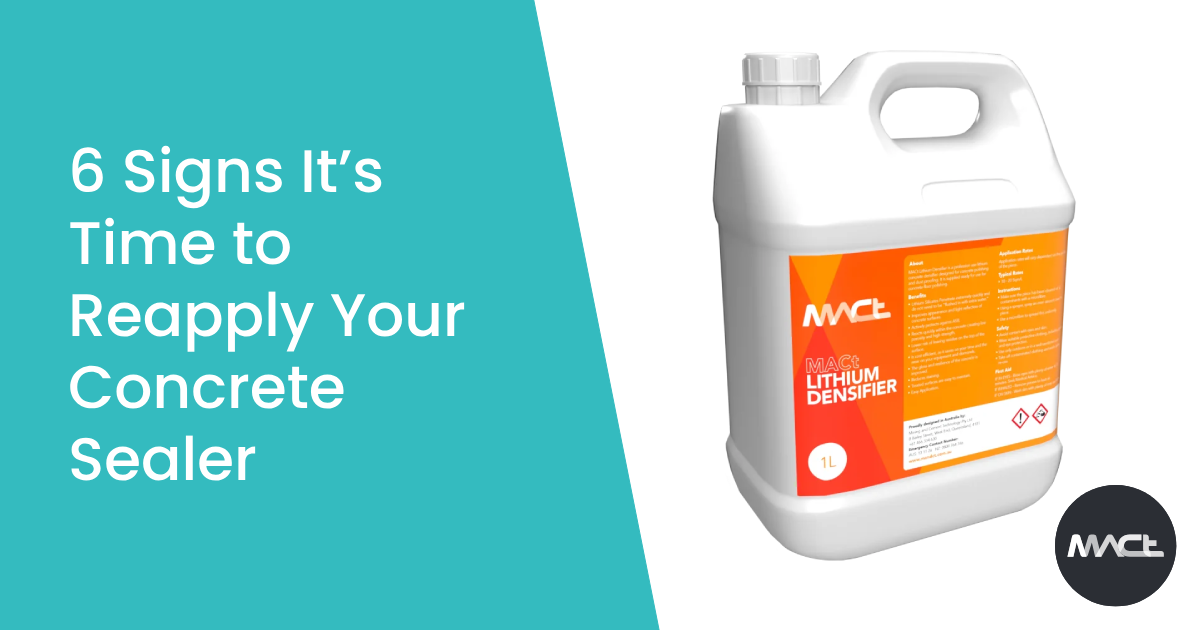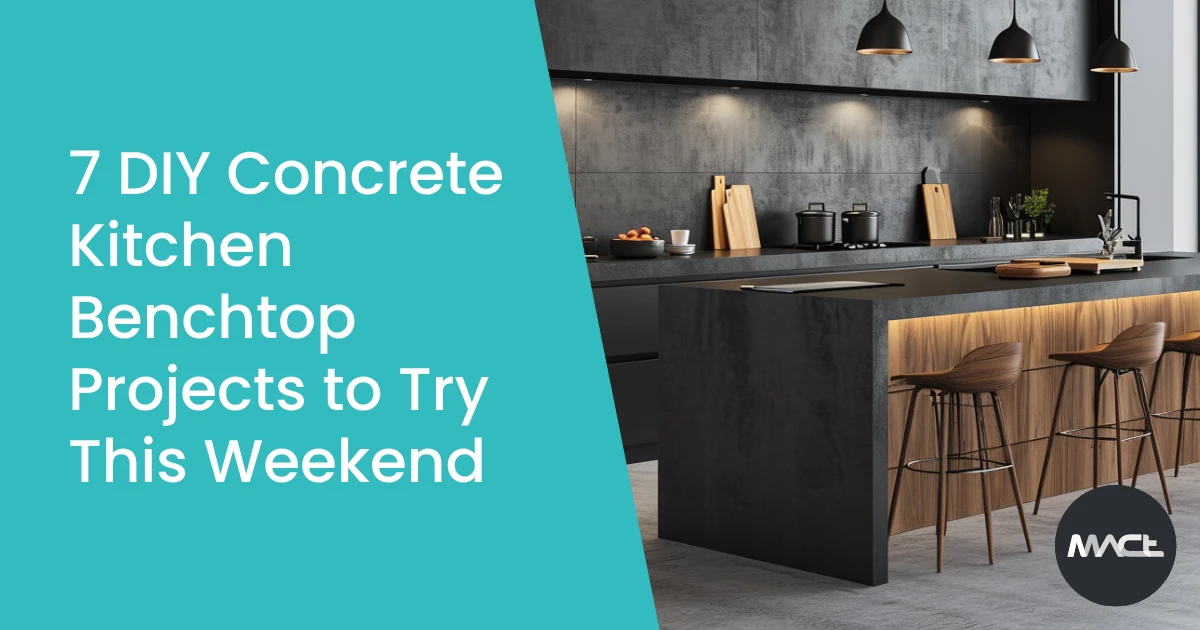Table of Contents
When it comes to choosing materials for outdoor furniture, architects need to think about style, function, and durability. Two popular materials are GFRC (Glass Fibre Reinforced Concrete) and traditional concrete. While both have their strengths, they differ in how they can be used in design, weight, and the overall look they offer. This article will explore how each material performs from a design point of view, helping architects make the best choice for their projects.
1. Material Flexibility and Shape
GFRC:
- Highly flexible in design, allowing for intricate shapes and finer details.
- Can be made into thinner pieces without losing strength.
- Ideal for creating modern, sleek forms or smooth curves that fit a wide range of architectural styles.
Traditional Concrete:
- Strong but less versatile in creating thin or detailed shapes.
- Furniture made from traditional concrete is usually thicker and bulkier.
- Suits rustic or industrial designs, where a sense of weight and solidity is desired.
Architect’s Takeaway:
If your design vision involves sleek, sculptural, or flowing shapes, GFRC outdoor furniture is the better option. For designs that focus on heaviness and stability, traditional concrete may still work.
2. Weight and Installation
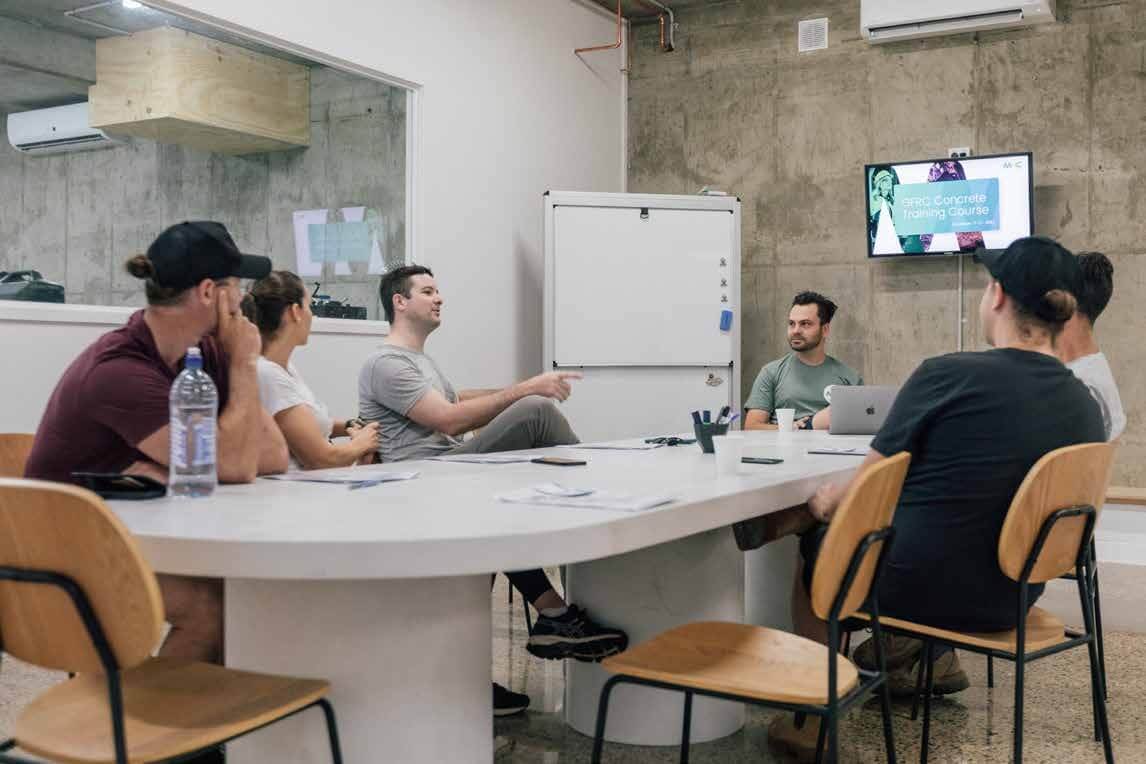
GFRC:
- Lightweight yet strong, making it easier to move and install.
- Works well in areas with weight limits, like rooftop gardens or elevated spaces.
- Its lighter weight lets architects use larger or more complex furniture pieces without overloading the structure.
Traditional Concrete:
- Heavier, which can limit where it’s used.
- Once placed, it’s not easy to move or rearrange.
- Adds a sense of permanence, but its weight might be a drawback in delicate spaces, like decks or balconies.
Architect’s Takeaway:
GFRC’s lighter weight offers more freedom in design, making it perfect for spaces where structural weight is a concern. Traditional concrete may be more suited to ground-level designs where weight adds stability.
3. Surface Finish and Texture
GFRC:
- Offers smooth, refined finishes and can be cast into detailed textures.
- This allows it to blend with both modern buildings or offer contrast in natural environments.
Traditional Concrete:
- Tends to have a rougher texture unless it’s specially finished, which can add to the cost.
- More suited to designs that embrace raw, industrial textures.
Architect’s Takeaway:
For projects needing polished, high-end finishes, GFRC outdoor furniture offers much more flexibility. Traditional concrete works better in rougher, more natural designs but requires extra work to achieve smooth finishes.
Ad
GFRC Training Course

Join the MACt GFRC Workshop on November 22-23, 2024, in Banyo, QLD. Learn expert techniques in mould design, form preparation, mixing, pouring, and finishing GFRC. Perfect for DIY enthusiasts, architects, and tradesmen. Early bird price is $1490 (regularly $2500). Don’t miss this opportunity to master GFRC!
4. Customisation and Blending with Landscape Design
GFRC:
- Easily customisable, allowing for unique shapes and a range of colours.
- Perfect for designs where furniture should blend with nearby buildings or stand out as a statement piece.
- Colour can be added during the production process, offering more options for matching the environment.
Traditional Concrete:
- Customisation is possible but more limited.
- Adding pigments can create different looks, but the colours are often less vibrant or consistent compared to GFRC.
- Complex shapes are harder to achieve, making it less suitable for bespoke designs.
Architect’s Takeaway:
GFRC’s customisability allows architects to create tailored, site-specific designs that match the overall vision of the outdoor space. Traditional concrete is better for simpler designs that don’t require as much customisation.
5. Weather Resistance and Longevity
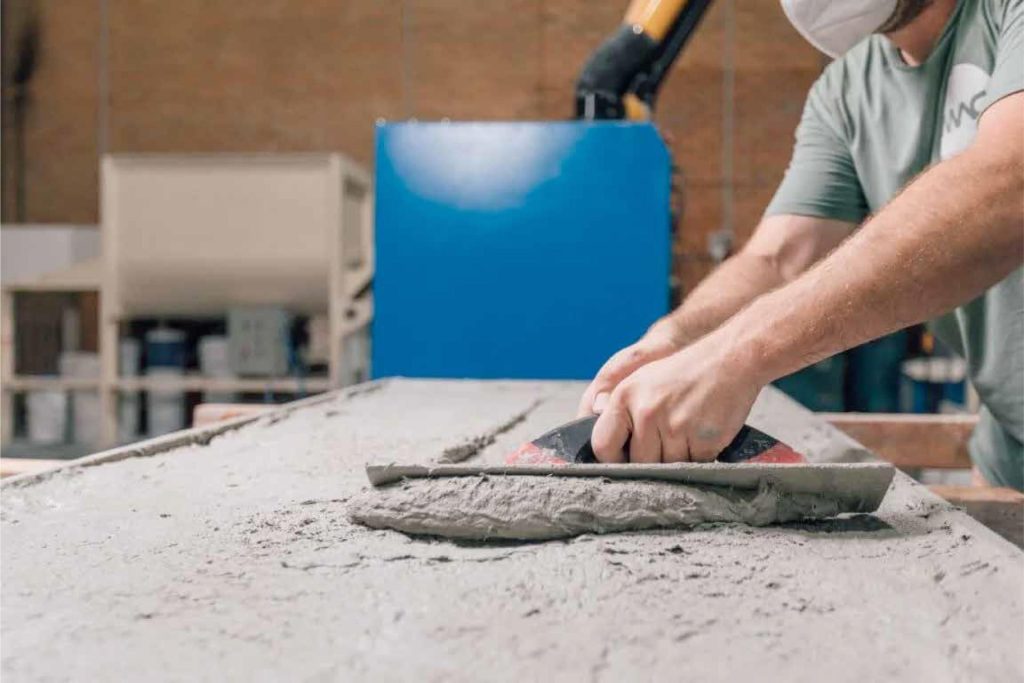
GFRC:
- Highly resistant to weathering, cracking, and damage from moisture.
- Tensile strength means it lasts longer in outdoor conditions without much maintenance.
- Retains its appearance over time, which makes it a great choice for long-term projects.
Traditional Concrete:
- Known for its strength, but it can be prone to cracking or wear, especially in areas with harsh winters.
- Needs more maintenance, such as resealing, to keep it looking good over time.
Architect’s Takeaway:
GFRC is more weather-resistant, keeping its aesthetic appeal intact with minimal upkeep. Traditional concrete might require more maintenance to keep its appearance, particularly in harsh weather conditions.
Final Thoughts
For architects, GFRC stands out as the better choice when it comes to design freedom. Its ability to be shaped into complex, intricate forms, combined with its lightweight nature and refined finishes, makes it ideal for modern, creative outdoor designs. GFRC allows architects to create furniture that not only serves a functional purpose but also becomes a part of the overall architectural experience.
While traditional concrete still has its place in designs that focus on strength and a rustic look, GFRC’s ability to adapt to different styles and spaces makes it the preferred choice for architects looking to create innovative, forward-thinking outdoor furniture.
Looking to enhance your outdoor area with durable and stylish GFRC furniture? Get in touch with us today to explore how GFRC can be the perfect choice for your outdoor space and design needs.
